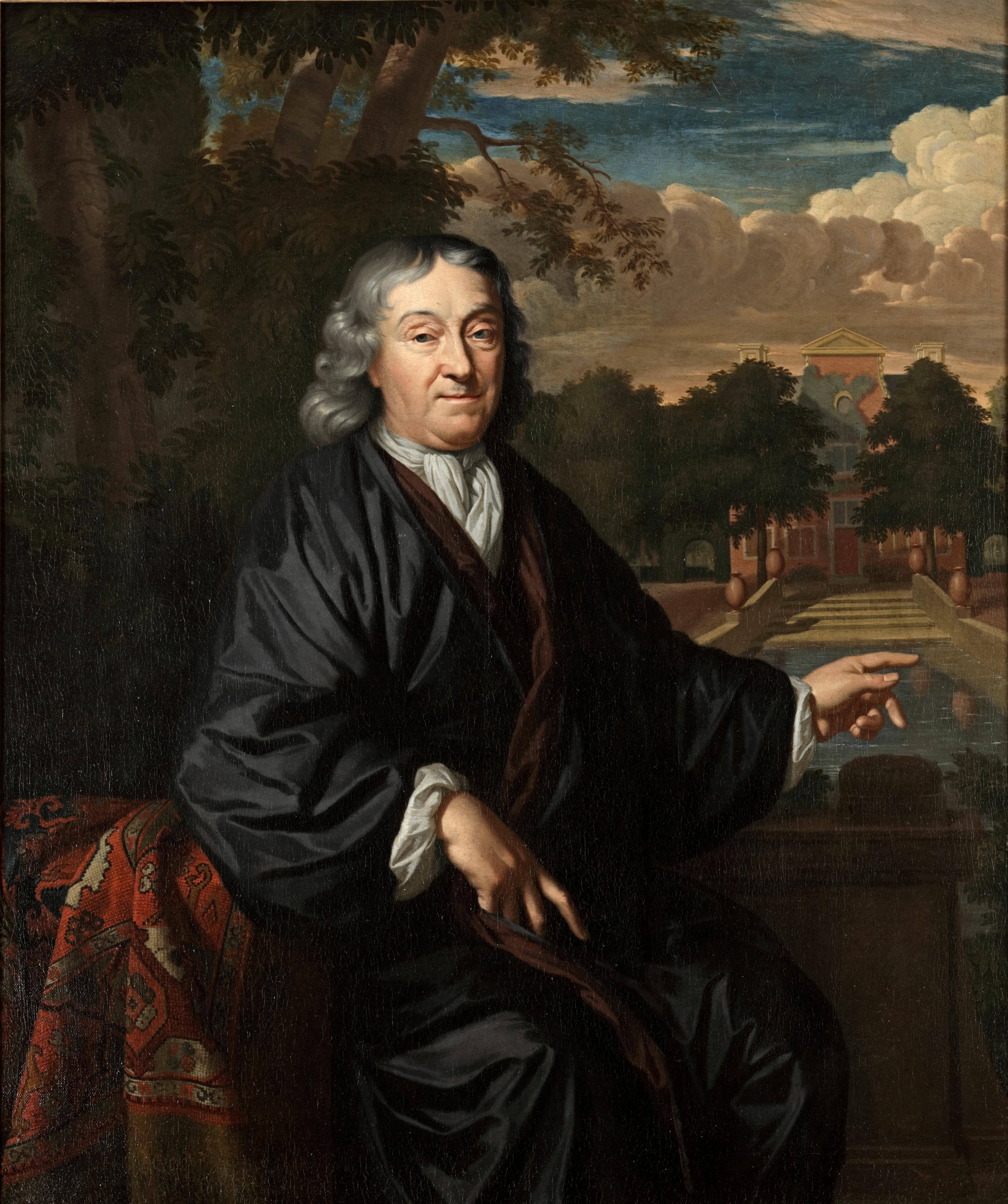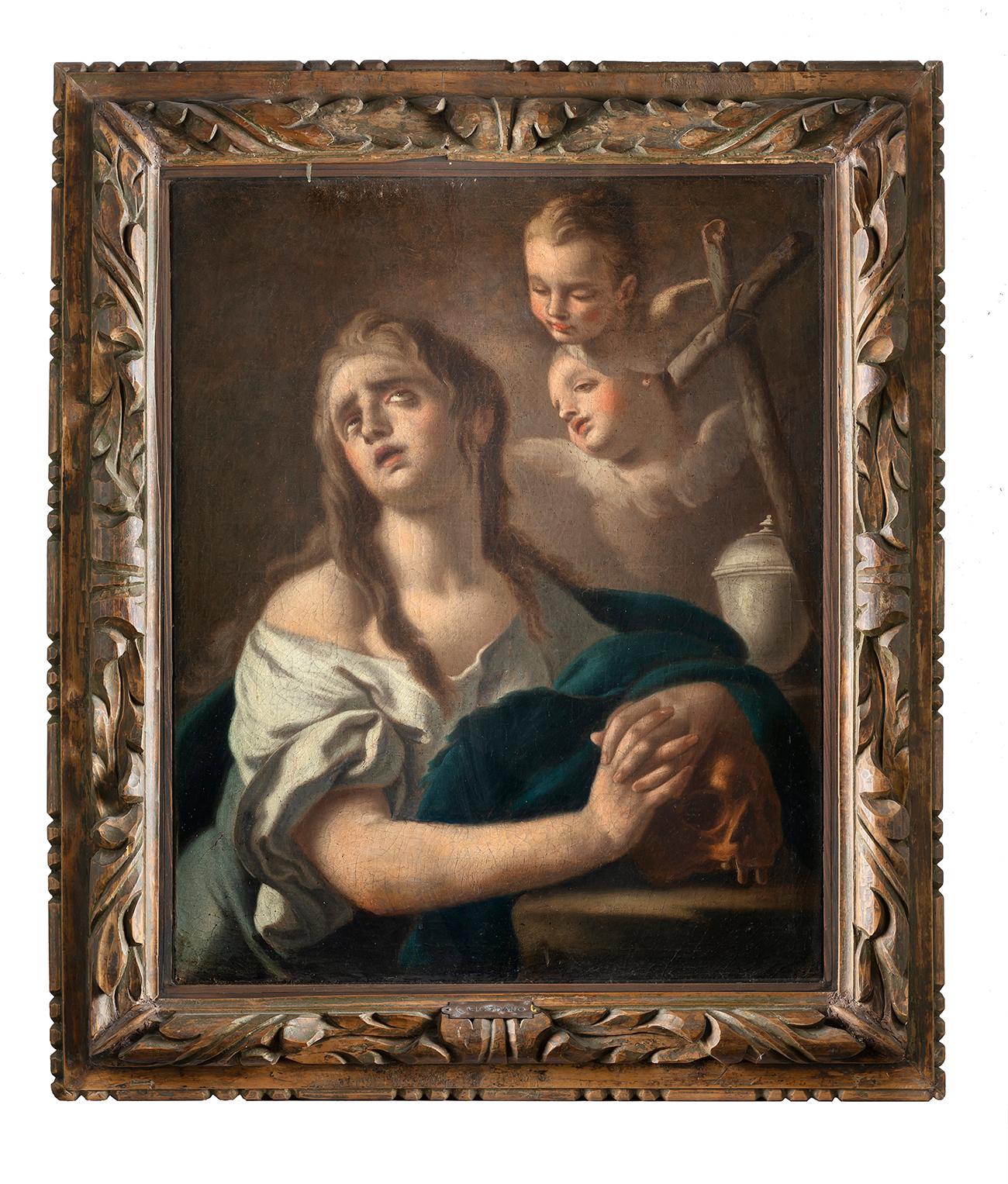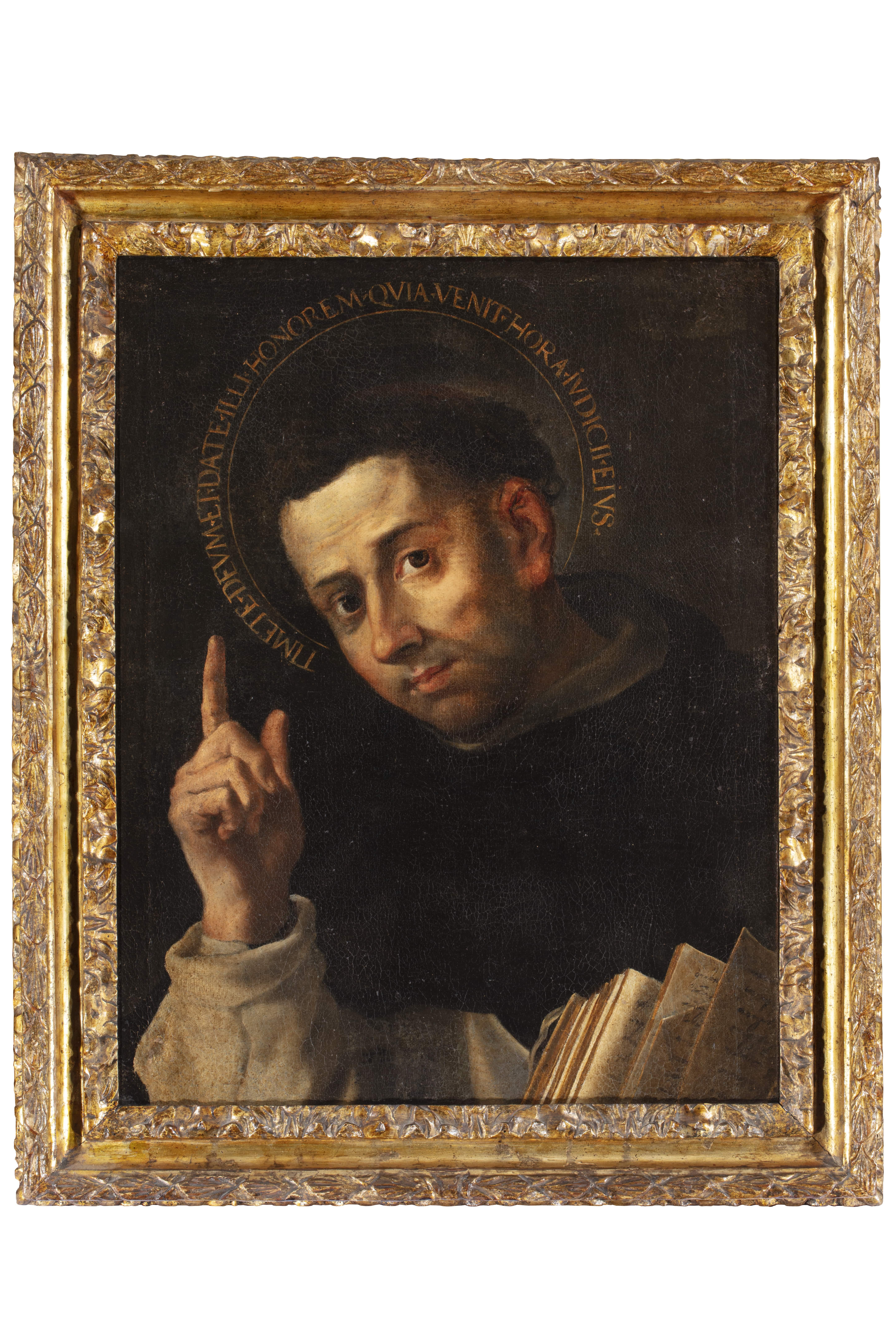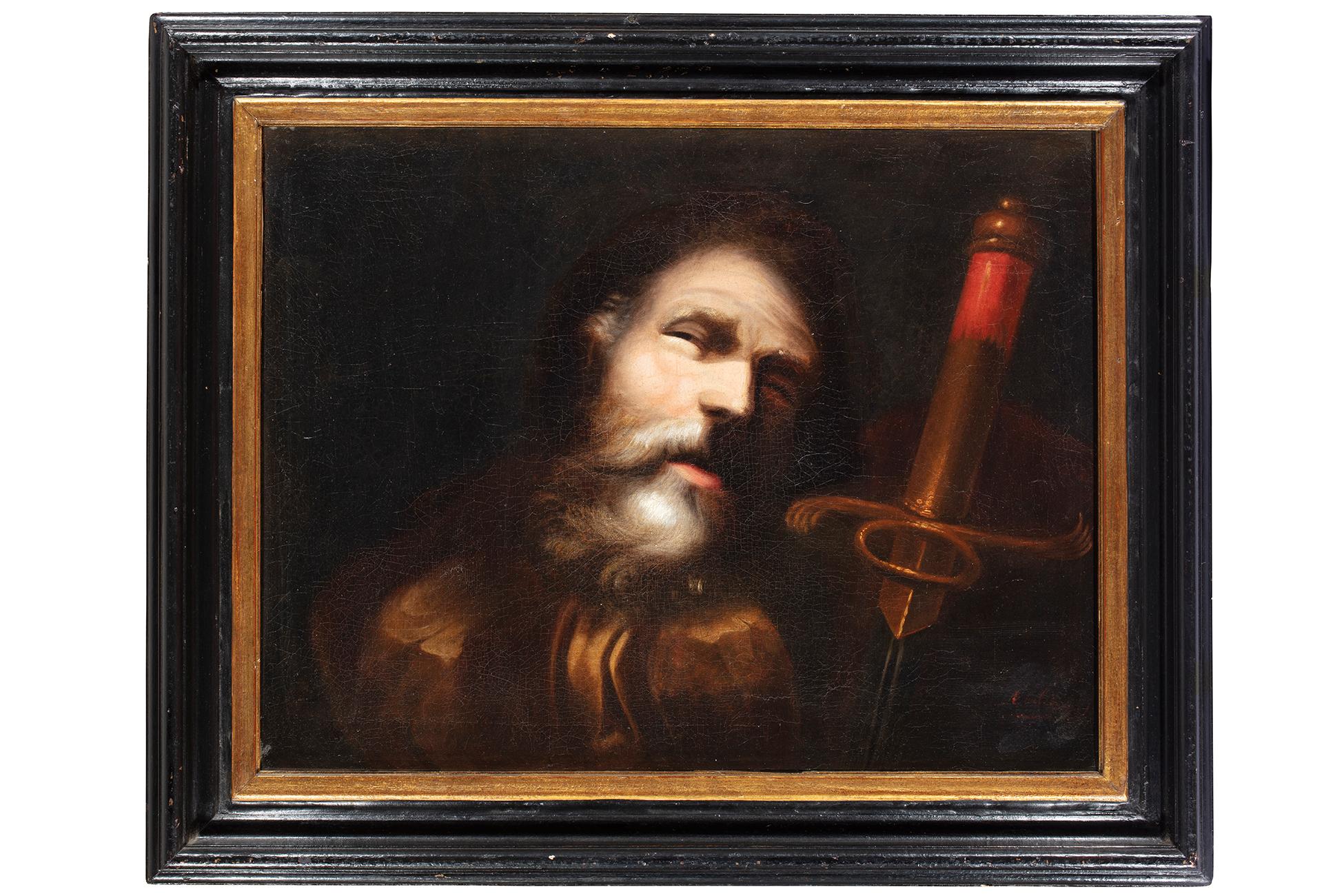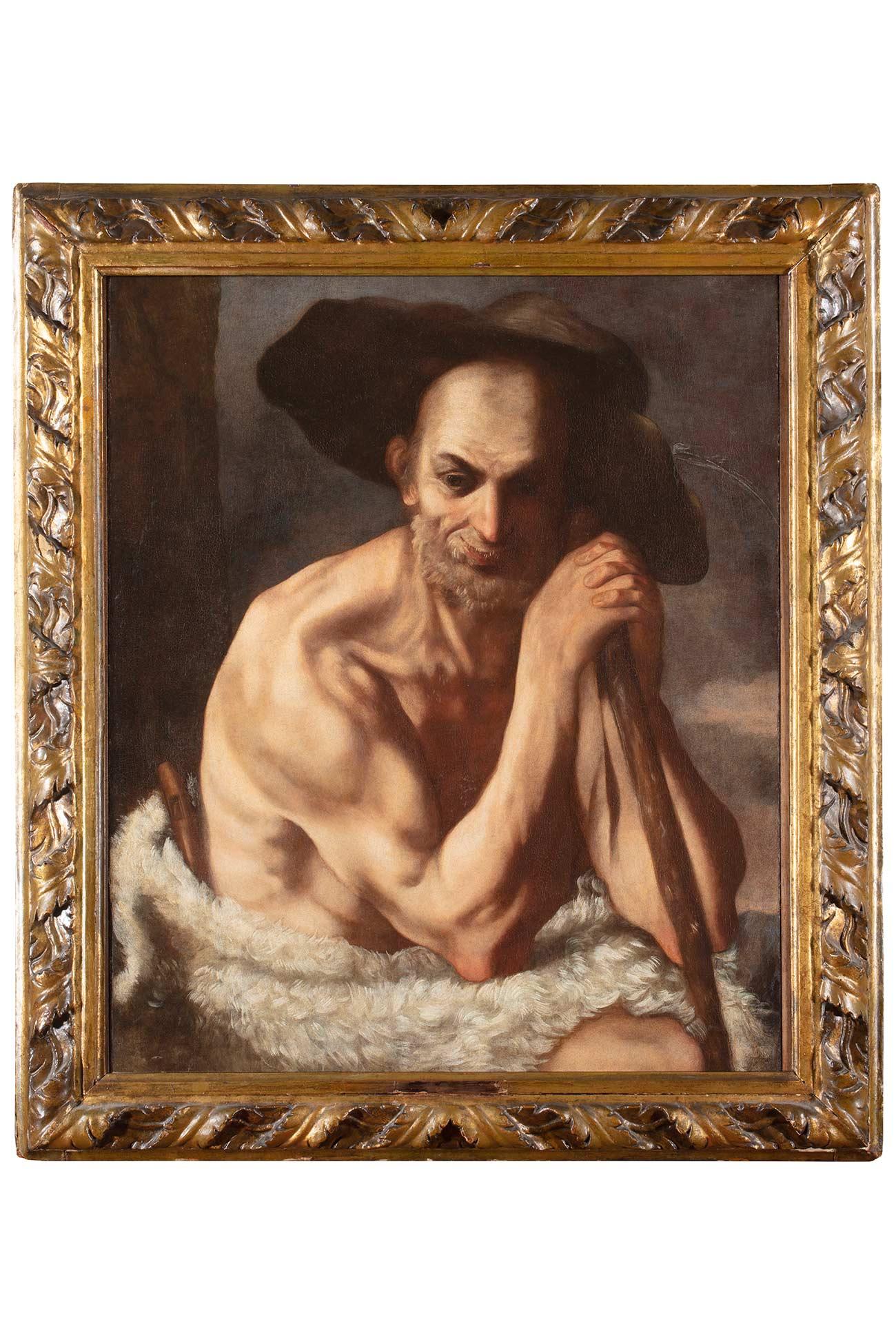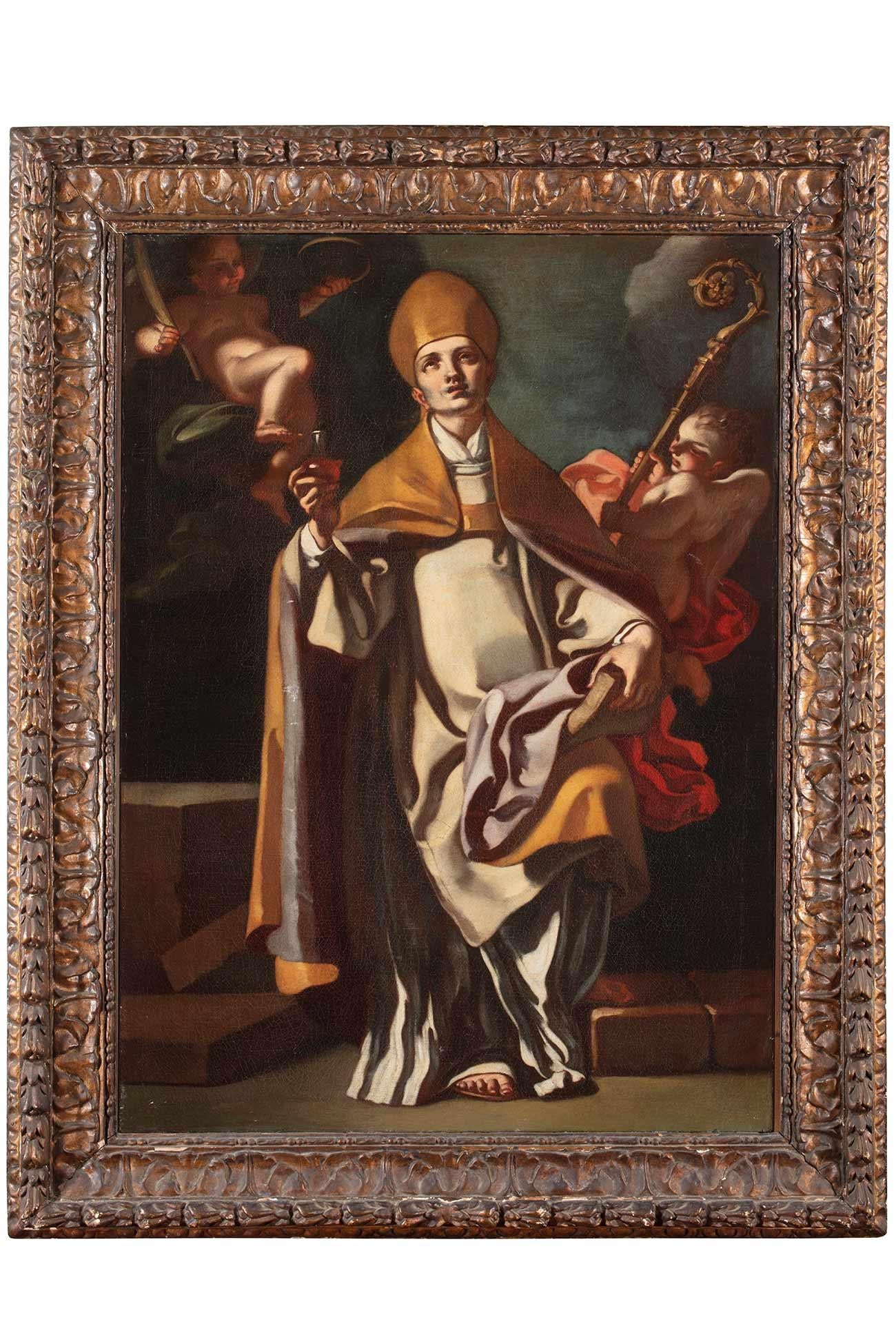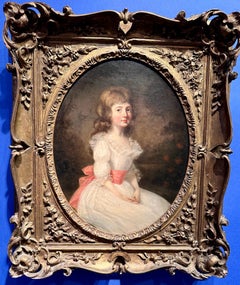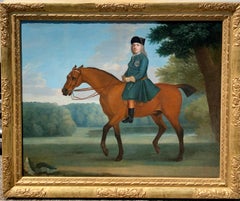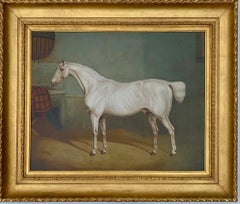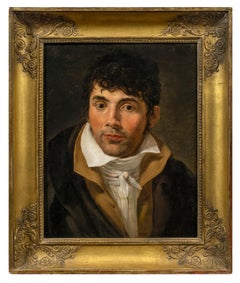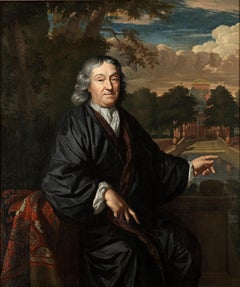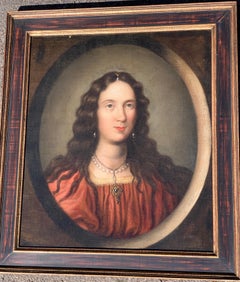
Old Master Italian 17th Century portrait of a Young Girl.
View Similar Items
Want more images or videos?
Request additional images or videos from the seller
1 of 10
UnknownOld Master Italian 17th Century portrait of a Young Girl.Circa 1680
Circa 1680
About the Item
- Creation Year:Circa 1680
- Dimensions:Height: 28 in (71.12 cm)Width: 22 in (55.88 cm)
- More Editions & Sizes:28 x 22Price: $4,500
- Medium:
- Movement & Style:
- Period:1680-1689
- Condition:Cleaned and relined and in very good condition for the age of the piece.
- Gallery Location:Woodbury, CT
- Reference Number:1stDibs: LU50731566863
About the Seller
5.0
Platinum Seller
These expertly vetted sellers are 1stDibs' most experienced sellers and are rated highest by our customers.
Established in 1983
1stDibs seller since 2016
404 sales on 1stDibs
More From This SellerView All
- 18th century Portrait of a young girl, Miss Cator in a landscape, white dressBy John RussellLocated in Woodbury, CTPortrait of a young British Girl, in her white dress with Pink Sash. Choosing to acquire an 18th-century portrait of a young girl by English artist John Russell is an opportunity to...Category
1780s Old Masters Portrait Paintings
MaterialsCanvas, Oil
$7,960 Sale Price20% OffFree Shipping - 18th century English portrait of the Duke of Newcastle upon his horse inBy Thomas SpencerLocated in Woodbury, CTThomas Spencer was a leading sporting and equestrian artist of the period of John Wootton and James Seymour; his art shows a considerable to debt to tha...Category
1760s Old Masters Portrait Paintings
MaterialsCanvas, Oil
$54,800 Sale Price20% OffFree Shipping - 19th century English portrait of a White/grey hunter in a stableBy Charles TowneLocated in Woodbury, CTEnglish 19th century portrait of a White / Grey hunter in a stable. Charles Towne was born in Wigan in 1763. He was trained as a coach painter, and by ...Category
1820s Old Masters Animal Paintings
MaterialsOil, Canvas
$19,600 Sale Price20% OffFree Shipping - 18th century oil painting English portrait of a gent in armor, wearing a wigBy studio of Sir Godfrey KnellerLocated in Woodbury, CTOutstanding early 18th century English portrait of James Bellevue. The portrait was always believed to be the work of Sir Godfrey Kneller who was known to have painted James Bellevu...Category
Early 1700s Old Masters Portrait Paintings
MaterialsOil, Canvas
$7,960 Sale Price20% OffFree Shipping - 19thc century classical French portrait sketch of a North African mans headLocated in Woodbury, CTOutstanding small oil on velum sketch of a North African/ Arab head study. The painting is a classic sketch and I'm sure the figure would have been used in a much larger finished w...Category
1850s Old Masters Portrait Paintings
MaterialsOil
$14,800 Sale Price20% OffFree Shipping - !8th century Irish or English portrait of a woman with Ermin, blue dressing laceLocated in Woodbury, CTWonderful 18th century Irish or English portrait, attributed to the Irish painter Nathaniel Hone. Nathaniel Hone was born in Dublin but by 1748 had set...Category
1780s Old Masters Portrait Paintings
MaterialsOil
$9,200 Sale Price20% OffFree Shipping
You May Also Like
- Portrait of a GentlemanLocated in New York, NYCircle of Jacques-Louis David (French, 18th Century) Provenance: Private Collection, Buenos Aires Exhibited: “Art of Collecting,” Flint Institute of Art, Flint, Michigan, 23 November 2018 – 6 January 2019. This vibrant portrait of young man was traditionally considered a work by Jacques-Louis David, whose style it recalls, but to whom it cannot be convincingly attributed. Rather, it would appear to be by a painter in his immediate following—an artist likely working in France in the first decade of the nineteenth century. Several names have been proposed as the portrait’s author: François Gérard, Louis Hersent, Anne-Louis Girodet (Fig. 1), Theodore Gericault, and Jean-Baptiste Wicar, among others. Some have thought the artist Italian, and have proposed Andrea Appiani, Gaspare Landi...Category
18th Century Old Masters Paintings
MaterialsCanvas, Oil
$45,000 - Portrait of a Lady with a ChiqueadorLocated in New York, NYProvenance: Torres Family Collection, Asunción, Paraguay, ca. 1967-2017 While the genre of portraiture flourished in the New World, very few examples of early Spanish colonial portraits have survived to the present day. This remarkable painting is a rare example of female portraiture, depicting a member of the highest echelons of society in Cuzco during the last quarter of the 17th century. Its most distinctive feature is the false beauty mark (called a chiqueador) that the sitter wears on her left temple. Chiqueadores served both a cosmetic and medicinal function. In addition to beautifying their wearers, these silk or velvet pouches often contained medicinal herbs thought to cure headaches. This painting depicts an unidentified lady from the Creole elite in Cuzco. Her formal posture and black costume are both typical of the established conventions of period portraiture and in line with the severe fashion of the Spanish court under the reign of Charles II, which remained current until the 18th century. She is shown in three-quarter profile, her long braids tied with soft pink bows and decorated with quatrefoil flowers, likely made of silver. Her facial features are idealized and rendered with great subtly, particularly in the rosy cheeks. While this portrait lacks the conventional coat of arms or cartouche that identifies the sitter, her high status is made clear by the wealth of jewels and luxury materials present in the painting. She is placed in an interior, set off against the red velvet curtain tied in the middle with a knot on her right, and the table covered with gold-trimmed red velvet cloth at the left. The sitter wears a four-tier pearl necklace with a knot in the center with matching three-tiered pearl bracelets and a cross-shaped earing with three increasingly large pearls. She also has several gold and silver rings on both hands—one holds a pair of silver gloves with red lining and the other is posed on a golden metal box, possibly a jewelry box. The materials of her costume are also of the highest quality, particularly the white lace trim of her wide neckline and circular cuffs. The historical moment in which this painting was produced was particularly rich in commissions of this kind. Following his arrival in Cuzco from Spain in the early 1670’s, bishop Manuel de Mollinedo y Angulo actively promoted the emergence of a distinctive regional school of painting in the city. Additionally, with the increase of wealth and economic prosperity in the New World, portraits quickly became a way for the growing elite class to celebrate their place in society and to preserve their memory. Portraits like this one would have been prominently displayed in a family’s home, perhaps in a dynastic portrait gallery. We are grateful to Professor Luis Eduardo Wuffarden for his assistance cataloguing this painting on the basis of high-resolution images. He has written that “the sober palette of the canvas, the quality of the pigments, the degree of aging, and the craquelure pattern on the painting layer confirm it to be an authentic and representative work of the Cuzco school of painting...Category
17th Century Old Masters Paintings
MaterialsCanvas, Oil
- Male and female portrait, both in silk kimono, possibly textile dealersBy Christoffel LubienieckiLocated in Amsterdam, NLCHRISTOFFEL LUBIENIECKI (1659-1729) Pair of portraits of a gentleman and a lady, both in silk kimono, before a country house (circa 1680) Indistinctly signed “C.......” on a box under the man’s left hand Oil on canvas, 79.5 x 67 cm each Both sitters are portrayed wearing a silk “Japanese” coat. During the second half of the seventeenth the Japanese silk coat, an adapted Japanese kimono, became a real vogue in the Dutch elite. The exclusive Dutch trade contacts with Japan can explain the popularity of the kimono-style silk coats in the Netherlands. Everybody who could afford one, dressed in such a fashionable and comfortable coat and, like the present sitters, some proud owners had themselves portrayed in a “Japanese” coat often together with an oriental carpet to underline their standing and international connections. These portraits are the work of the Polish-born portraitist Christoffel Lubieniecki (also known as Lubienitski, Lubinitski or Lubiniecki) Lubieniecki was first trained in Hamburg under Julian Stuhr and after 1675 in Amsterdam under Adriaen Backer and Gerard de Lairesse. He specialized in landscapes, generally of an Italianate character, and in portraits. The loving execution of these contented burghers, enjoying the garden vistas of their country house, places him alongside Amsterdam portraitists such as Constantijn Netscher and Michiel van Musscher...Category
1680s Old Masters Portrait Paintings
MaterialsCanvas, Oil
- 18th Century by Pietro Bardellino Mary Magdalene Painting Oil on CanvasBy Pietro BardellinoLocated in Milano, LombardiaPietro Bardellino (Naples, 1731 – Naples, 1806) Mary Magdalene Oil on canvas, cm. 75 x 60 – with frame cm. 97 x 82 Antique shaped and carved wooden frame Publications: unpublished T...Category
Mid-18th Century Old Masters Portrait Paintings
MaterialsCanvas, Oil
- 17th century By Neapolitan maestro San Vincenzo Ferreri Oil on canvasLocated in Milano, Lombardia“Timete Deum et date Illi honorem quia venit hora iudicii Eius” (Fear the Lord and honour Him, for the hour of His judgement has come): the passage from John's Apocalypse (chapter 14...Category
17th Century Old Masters Portrait Paintings
MaterialsCanvas, Oil
- 17th Century by Giuseppe Assereto Portrait of an Elderly Woman Oil on CanvasBy Giuseppe AsseretoLocated in Milano, LombardiaGiuseppe Assereto (Genova - 1626 ca – Genova 1656/57) Portrait of an elderly woman, possible portrait of Maddalena Massone, wife of Gioacchino Assereto Oil on canvas, cm. 65,5 x 51,5...Category
Early 17th Century Old Masters Portrait Paintings
MaterialsCanvas, Oil
Recently Viewed
View AllMore Ways To Browse
Master Made
Unknown Master
Old Italian Antique
English Masters
Old Masters Italy
Old Master Painting Italian
Italian Girl
Italian Old Masters Art Framed
Italian Old Masters Framed Art
English Old Master
Antique Oil Painting Of Young Girl Paintings
Framed Oil Portrait Young Girl
Old English Oil Portraits
17th English Oil
17th Century Italian Oil Portrait
17th Century English Oil Paintings
17th Century English Portraits
17th Century English Portraits Oil


